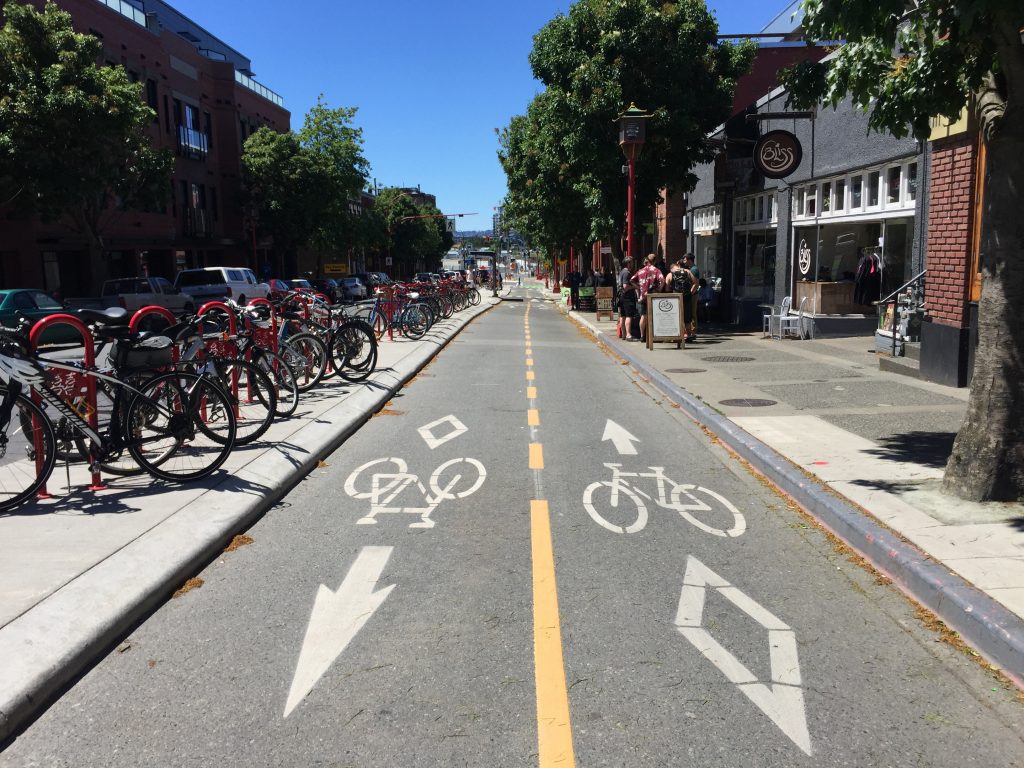COVID 19 has raised awareness and need for cycling infrastructure in our communities. The need has always been there, but the follow through has been lacking. After March 2020, it suddenly became critical everywhere. Bicycle networks has become one of the world’s next big public works project. Those who already had them thanked the foresight of the past. Those without, scrambled.
In early April 2020, we reviewed our older infrastructure proposal designed to scale up bike networks across the country. This was used as the basis for a national level COVID emergency mobility and investment recommendation. We checked the numbers and added post-pandemic urgency to help roll it out quickly. We shared it with Canada’s lead on active transportation planning, Parliamentary Secretary for Infrastructure and Communities Andy Fillmore.
Read the 2020 letter outlining our recommended infrastructure response
This plan is without a discernible downside. It is something that should excite every Canadian of every age. It offers us all a glimpse of hope in a difficult time and builds on the community responses we are already seeing.
“It is the least destructive investment Canada can make. Anywhere. You can go to the mountains in BC. You can go to the La Cloche mountains that I see almost everyday when I am out on my ride. You can go to The Plains…. It is the least detrimental to the environment and leaves it to the next generation to follow and use.”
-Josh Shaw, Wikwemikong Unceded Territory, speaking at the 2017 National Bike Summit about seven generations thinking and cycling infrastructure investment.
Never underestimate the power of the bicycle to change the future of a country.
The Oil Shocks of the 1970’s presented countries with a choice. Countries becoming more dependent on oil were offered two distinct paths forward. One based substantially on healthy local trips and communities built at a personal and human scale. The other based on burning fossil fuels, heralding grand visions of modernity but would ultimately usher in a congestion-prone future for cities.
Some countries, the Netherlands being the most well-known example, redoubled efforts to support healthy modes. Bolstered by growing distaste for traffic injury and impacts on children’s freedom of mobility, the chose to embrace the bicycle. It’s paid off.
Their choice led to a diversified, efficient, and resilient multi-modal transport landscape with low traffic injury rates, low levels of chronic disease, and mobility rankings that are the envy of economists, planners, health practitioners everywhere.
The US had a plan to build 100,000 miles of bikeways. But it chose not to. Canada followed their lead. This ultimately contributed to drastic changes in our cities and many of the biggest health and environmental challenges we now face.
But people’s thinking has evolved on how cities ought to be built. The shine is off car culture. Road users of all kinds want change. They want options and choice. Vélo Canada Bikes led a joint effort with partners at the CAA and the Heart and Stroke Foundation and other national organizations to refresh and expand a proposal seeking major investments in active transportation infrastructure.
We proposed a $2.1 Billion active transportation investment over 3 years, spearheaded by the Government of Canada and matched by all other orders of government. The goal was to provide momentum to existing plans and scale up the best examples in every province and territory. Communities large and small had networks in the plans to build and most still remain to be built. Our joint 2016 proposal would have led to a leap forward in independent mobility, on a national scale. Despite initial enthusiasm, shifting political landscapes at home affected decisions, and programs fell short of being the catalyst needed.
Now in 2020, Canada finds itself facing a challenge even bigger than the 50 year old energy crisis. The coronavirus crisis and it’s impact on mobility of such a global magnitude was not imagined just 4 years ago. Now, the need for multi-pronged solutions with high return on investment and clearly supports mental and physical health has never been greater.



